Now flam'd the Dog-star's unpropitious ray,
Smote ev'ry Brain, and wither'd ev'ry Bay;
Sick was the Sun, the Owl forsook his bow'r,
The moon-struck Prophet felt the madding hour.
Then rose the seed of Chaos, and of Night,
To blot out order, and extinguish light,
Of dull and venal a new world to mould,
And bring Saturnian days of lead and gold.
-- The Dunciad, Alexander Pope
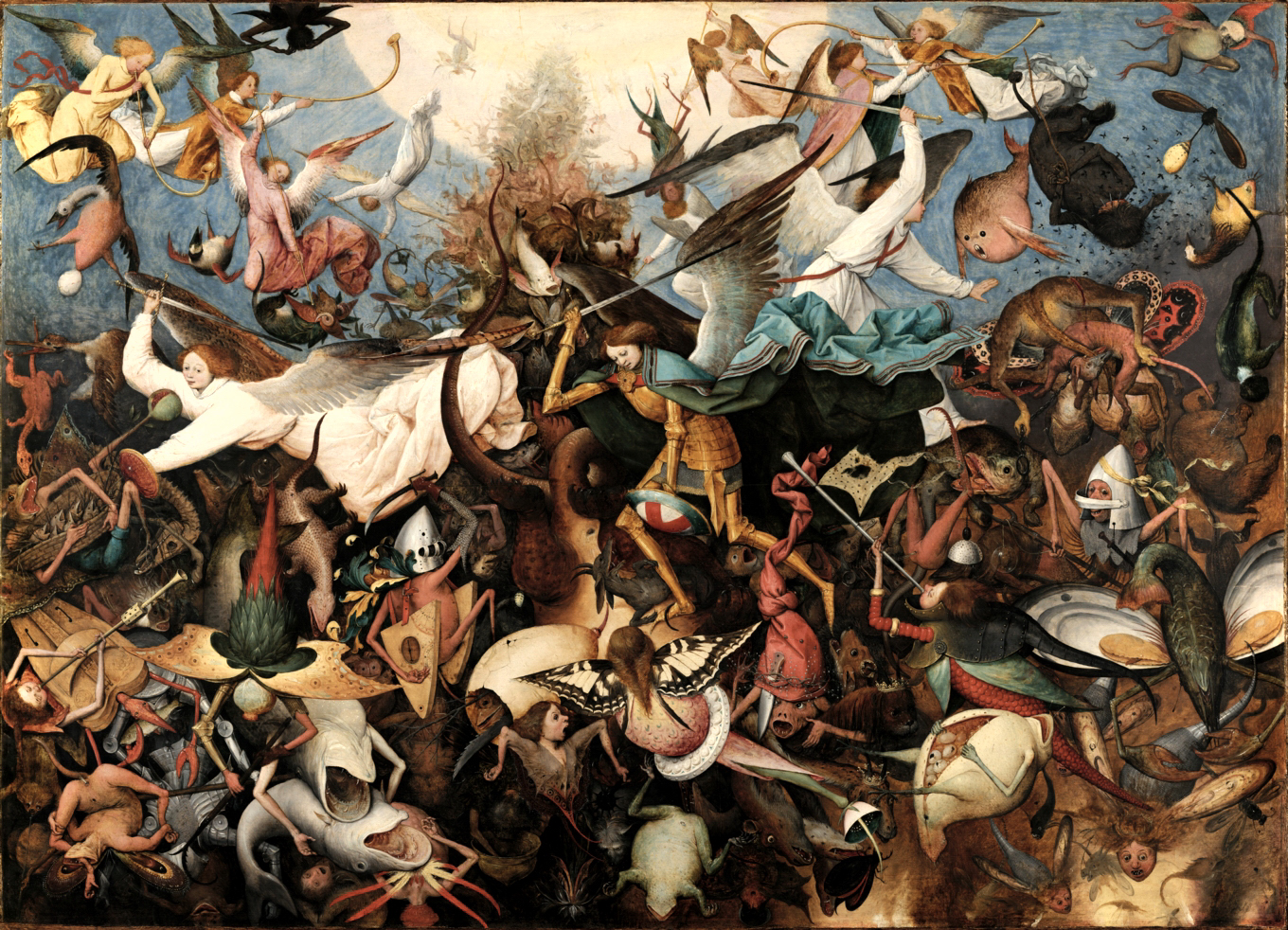
[Last weekend, I was delighted to have a wonderful conversation with Douglas Bolles and Alan Green. During the discussion I mentioned my Sirius obsession, triggered by Cosmic Trigger itself, which eventually led me to the Wake and to the entire sync cultural mutation. This conversation inspired me to dig through my old notebooks and, as I'm stalling on writing anything else, to publish some of my feverish research (from 2010) on the Dog Star. Much of this, cobbled together from a pile of sources, will not be new to serious Sirius junkies. But some of it, scattershot, unreferenced and manic as it is, might bring something different to the table. And the Dog Days soon begin to scorch.]
In Ancient Egypt, New Year's Day coincided with the heliacal rising of Sirius. At this time the waters of the Nile also rose, replenishing the alluvial plains, providing water for crops in a rainless land. Sirius was then a harbinger of fertility, the goddess Isis awakening from seventy days in the Duat, the underworld.
In Mesopotamia a similar myth arose. Dumuzi and Inanna in Sumer, and latter Tammuz and Ishtar in Babylon, descend to the underworld, their worshipers holding an annual fast of lamentation before feasting in celebration with Sirius' (Ishtar's) dawning.
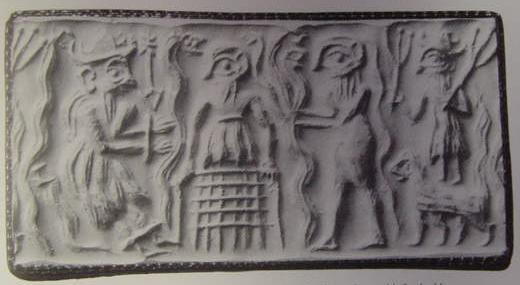
In Persia, Tishtrya, the god of rain, is worshiped as Sirius. He is made offerings of the sacrament haoma. In India soma is associated with Rudra, who is Sirius, and is an early name of the chthonic Shiva.
In Ancient Greek mythology Dionysus closely resembles Shiva. This Greek god, of very primitive origin, is the dios (god) of Mount Nysa which is the equivalent to Shiva's Mount Kailash.
Dionysus is now regarded to have arrived to Greece, likely from Egypt, via Minoan Crete. In Crete his cult was associated with the harvesting of honey for mead, and later the harvesting of grapes for wine. Both of these occurred alongside the Dog Days of the rising of Sirius.
The mysteries of Crete were perpetuated with the Mysteries of Eleusis in which, for two thousand years, the torch-bearing god Iacchos, called Dionysus and Bacchus by many, led the procession to begin the Mysteries. The poet Pindar called Iacchos "the bright star to illuminate the black night" -- Sirius. The best and the brightest of classical society, both Greek and Roman, became initiates of Eleusis performing a voyage through the underworld under the influence of kykeon, a soma-like brew.

Other Mysteries of the Classical era included that of Cybele, the Mother Goddess, Rhea or the Phrygian Isis. Her attendant in these rites, some say her dog, was the primeval god Pan, an archetype of the Green Man, nature personified. After attempting to outlaw the cult of Cybele, the Roman authorities being struck by various calamities, including an assault by Hannibal and the Carthaginians, decided it would be wise to allow the Black Stone of Cybele into Rome. This appears to have saved the city, and the cult was thereafter tolerated in a diluted form.
Cybele is said to be etymologically similar to the name of a place also associated with a Black Stone, the Kaaba in Mecca. Prior to Islam this was associated with the Goddess, Manat, who was linked to Sirius. In the Koran there is a verse claiming that Allah is "the Lord of Sirius," implying that He is sovereign over the pagan cult.
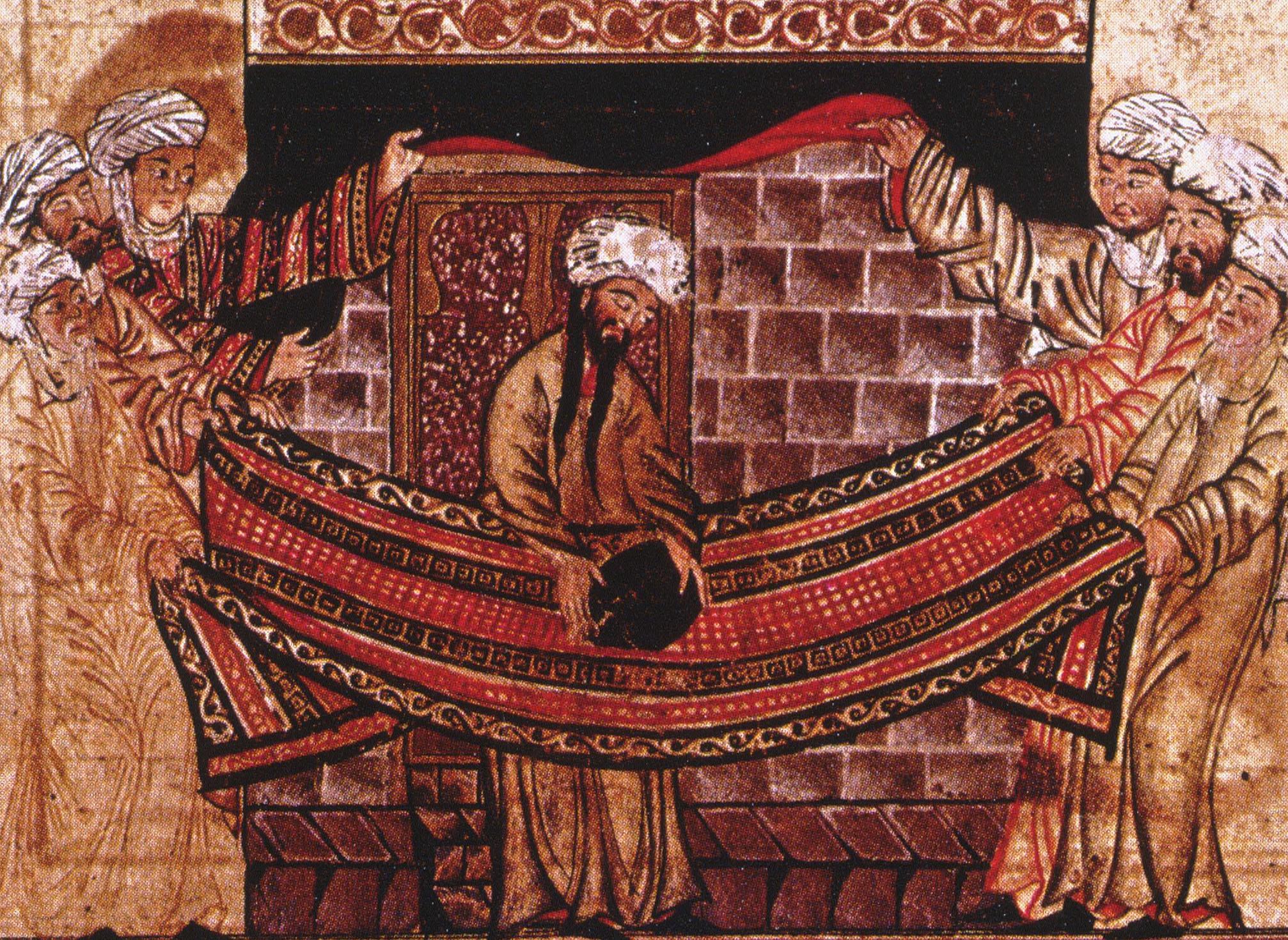
In any case, both black stones, of the Kaaba and Cybele, are said to have been meteorites, and both are indirectly linked to Sirius. This does not appear to be strange. Further east, in China and then in Japan, Sirius was associated with a constellation and star, T'ian Gou (in Japanese, Tengu), which can be translated as "celestial dog." This was also connected to the shape of meteors, which throughout the ancient world were connected to Sirius. Why?
One possibility is that the radiant point of many meteor showers appears, from Earth, to be in the vicinity of the Dog Star. It would have looked like, as it does now, that the meteors, containing their mysterious and holy minerals, were coming from Sirius. The ancients might have known that this was not literally the case, but symbolically and astrologically it would have been highly significant.
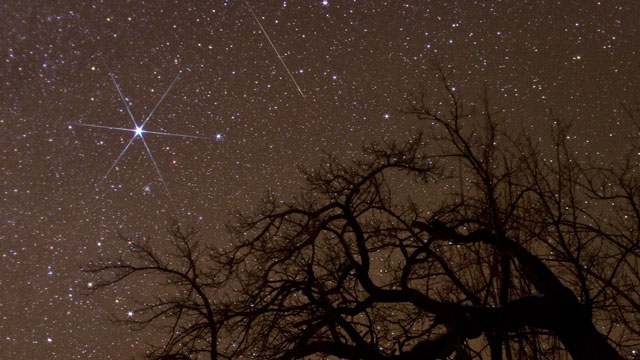
The ancients would have noticed that Sirius is not altered by precession like the other fixed stars. It has its own unique rhythms like the planets, to the point where modern observers suggest that it is united with our Sun in a binary star system. Sirius was viewed as being an eighth planet, possibly even "the Sun behind the Sun" -- the central Sun from which all life-giving energy emanated.
In Japan, the tengu became personified as mythical goblins of the mountains, but they were also related to the yamabushi of the arcane and syncretic Shugendo cult. The yamabushi are an ancient lineage of mountain shaman/ascetics who somehow took on the lore of the tengu from China. Amanita muscaria, which scholars see as being a possible ingredient for both soma and kykeon, is called beni-tengu-dake (red tengu mushroom) in Japan. It is probable that the yamabushi, like the shamans of Siberia, consumed the amanitas for visions. Did they also correspond them with Sirius?

In Ancient Egypt, the twelve constellation wheel of the zodiac appears to be unknown. Instead its astrology was based around the decans.
The rising of Sirius with the Sun began the year, and the first of the decans was also Sirius. Just as Sothis arose from the Duat after 70 days so, in ten days intervals, arose the 36 decans. They, along with Sirius who represented the five days of sacred time, completed the circle of the year.
Sothis was their chief, the mistress of the year, but like this brightest star the thirty-six were also revered and worshiped as great gods/daemons. Egypt was also regionally divided into 36 nomes.

When Alexander invaded Egypt he officially brought in the Greek zodiac. The decans were juxtaposed onto the new system, including their rulership by Sirius, affixed three to a sign to the wheel of the zodiac.
It is apparent, though, that their old significance lived on. The Asclepius, and other Hermetic writings, placed the decans in a sphere closer to the All, or the Empyrean, in their emanatory cosmology. Later, Augustine in the 4th century banned their worship and practices associated with them.

But fascination with the decans persisted. Their images were passed along among the Hermeticists and Gnostics, to the Sabians of Harran, to the mystics of the Muslim world, to India and perhaps beyond. In grimoires of goetic magic, published during the Middle Ages to well after the Renaissance, instructions were given to invoke the demons of the decans, usually 72 in total -- two for each decan (perhaps one for day and night).
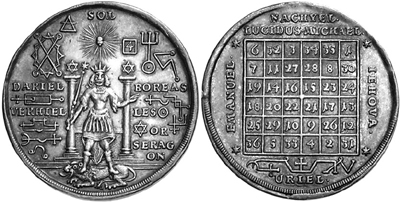
In the Helenistic world, strange myths and mysteries began to spark off one another. In particular one became very important. Zeus was tricked into drinking a love potion brewed by the sorceress/nymph, Iynx. Zeus then falls in love with Io, a priestess at his wife Hera's temple. He seduces Io. Hera finds out and turns Io into a cow, who Zeus proceeds to pursue. Hera, in her spite and jealously, then causes the cow to run and swim madly across the earth and sea, tormented by a gadfly. Iynx is turned into a wryneck bird for causing all the trouble.
Finally Io arrives in Egypt, becoming Isis according to the Greeks. Zeus catches her and turns her back into a woman. This begins a cycle of seductions, affairs, and revenge between Zeus and Hera (the Sun and the Moon) which initiates and perpetuates the whole of history.
Part of this cycle is the story of Jason and Medea. Jason asks Aphrodite to help seduce Medea and the Love Goddess gives him the iynx (from which is derived the word, jinx) -- the same wryneck/nymph now attached to a spinning four-spoked wheel like a cross. This magical device is an irresistible love charm and Jason, using it, wins Medea.

This device appears to be very widespread throughout the Classical world -- a type of bullroarer or spinning top-like instrument of enchantment. The iynx is said to have hung off the ceiling at the Oracle of Delphi. Socrates was fully aware of its use as a love charm. It was also called Hecate's wheel, after the mysterious, underworld goddess of liminality and witchcraft, who was often accompanied with canine familiars identified with the star Sirius. Through Plato, the iynx gets associated with the spiritualization of Eros. It is becomes a gateway to the forms of the Intelligible realm.
Iynx the bird of mantic inspiration, bound to the four-legged wheel, gives the notion of love crucified. The wheel denotes the world, of which she is the spirit, and the cross, the sacrifice made for that world. Iynx is used for love, desire, appetition... -- Anacalypsis, Godfrey Higgins (1832)
The iynx and Hecate appear together in the Chaldean Oracles, literary fragments ascribed to Zoroaster, but likely derived from the Sabians of Harran in the 2nd century. In these texts, the iynes (plural), the wheels of Hecate the great Mother, are passages to the Father, the Intelligible realm. The Oracles go on to inform and inspire all of the later Neo-Platonists -- Proclus, Iamblichus, Psellus, etc. This becomes a major influence on the whole Hermetic tradition, flowering fully again in Renaissance Europe.
The iynx appears in another important text -- originally a bronze tablet -- within this tradition. This is the Bembine Tablet of Isis. Originally thought to be of Ancient Egyptian origin, it was later dated to 2nd century Rome. Nonetheless, all agree it has profound occult value. It came to be studied by the Jesuit scholar, Athanasius Kircher, in the 1600s. Kircher claimed that the central figure, an Egyptian queen/goddess seated on a throne with a dog design and surrounded by the thirty-six decans, was both Isis and Iynx. Later occultists of the 19th century identified her with Sirius.
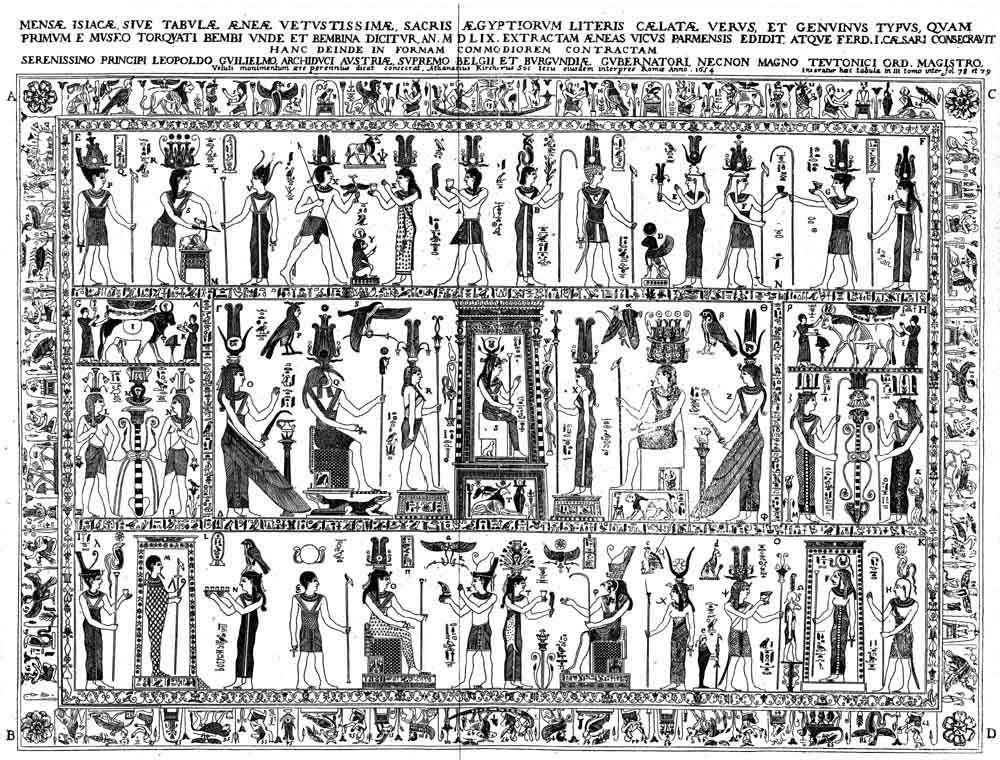
Another important connection is within the kabbalistic tradition, also linked by Gershom Scholem and others with Neo-Platonism. Later occultists, like Dion Fortune's student Gareth Knight, identify Sirius with the hidden sephiroth Da'at. Where did this correspondence arise from?
In The Zohar, Da'at, or knowledge, is seen as being the union of the Father and Mother, understanding and wisdom. It represents the portal to the higher self. The Zohar cautions, though, that before this can happen all of the chambers of the heart must be filled. This language of the father and the mother at the passage to Spirit is almost identical to that of the Chaldean Oracles in relation to the iynx. Are Da'at and the iynx essentially the same?
In the modern occult tradition, the paths of the Tree of Life, twenty-two in number and always corresponded to the Hebrew alphabet, are also matched to the Major Arcana of the Tarot. The path going through Da'at is Gimel, corresponding to card two, the High Priestess or Isis. Once again this relates to Sirius.

Da'at in the body, according to this tradition, is along the passage from the heart to the throat or head. It is called the Abyss, the Rainbow Bridge, the Narrow Passage. It is the threshold where the lurker waits to prevent those impure of heart from passing. To attempt to cross the Abyss without renouncing the ego first is to invite madness and/or complete possession by evil.
Is this Sirius then? Is this the Stairway to Heaven, where angels ascend and descend and demons explode like fiery meteors? Is this the bridge only crossed by Eros, the crazed, hypnotic spinning of the wryneck bird?
And yet it is also the Aion. It is the Sun behind the Sun which generates a more than doubling of light and heat during the Dog Days, causing madness, sexual frenzy and general intoxication. At this point the portal opens to the spiritual Sun, the Solar Logos, the Aion. But the Aion is also a span of time. This is the Sothic cycle of 1461 years when the Bennu bird returns to nest at the temple of the Sun in Heliopolis.
When the golden thistle flowers and the chirping cicada sitting on the tree pours out its shrill song continually from under its wings in the season of grueling summer, the goats are fattest and wine at its best, women are most lustful, and men are weakest, since Sirius dries out their heads and knees, and their skin is parched by the heat. -- Works and Days, Hesiod

The Benben Stone, on which the bird alights and makes his nest with myrrh, frankincense, balsam and other fragrant herbs, is the original Black Stone. The others will come later -- the original Decalogue of Moses (from Mount Sanai in Seir (Sirius)), the Black Stone of Cybele, Jacob's Pillow, the Kaaba Stone, the Holy Grail, the Stone of Scone, the Philosopher's Stone, the Chintamani Stone -- all perhaps meteors appearing to come from Sirius.
The Bennu is also the Phoenix, the Simurgh, the Basilisk, the Roc. It flies to the World Tree and scatters the spores of haoma throughout the Earth. The fragrant twigs of its nest, also harvested by tradition at the rising of Sirius, burn up along with the great bird to inaugurate the new Aion. In this way both time and space have a sacred point, the Aion, of transcendence.
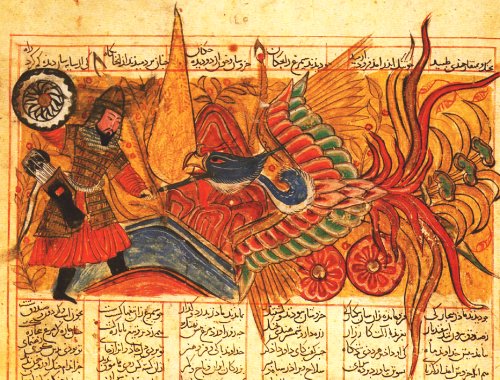
The new Phoenix flies up from the ashes -- the coming together of death and birth, the hierogamy of divine father and mother. The Phoenix was said to have appeared at the time of Christ's birth, at the time of the culmination of Sirius. Christ the Phoenix, the Saviour of this Aion, crucified like the iynx on the wheel.
And Sirius is also the origin of alchemy. Alchemy, ancient Khem -- Egypt -- derived from the rituals of the mummification process. This lasted seventy days, the duration of the Dog Star's stay in the underworld. As it rose with the Sun the mercury of Osiris flooded and impregnated the salty black earth of the plains of Isis. The search for the Philosopher's Stone is thus the desire to recreate this sacred moment, the union of psyche with physis.
Sirius, Isis, Da'at, Iynx, Hecate -- mythological representations of the passage between the Sensible and Intelligible realms. It is mother Nile, mother Ganga, the Milky Way -- the gaudy, seductive sash of Aphrodite masking the world-circling bond or zodiac of necessity. It streams downs from the Om, the All. It is evidently everywhere, its influence emanates through all the bodies of Heaven, all the organs of our physical shell, but it is also localized and encapsulated in one entity -- both symbol and reality -- the divine Sothis.

Alchemy is the breakdown of all substance, both physical and psychic, into its most base components, the full immersion into the darkest of shadows, absolute embrace with death, evil, shit, and their recombination into the finest gold -- Spirit united with Matter through the Soul. Time is also alchemical. The apotheosis only occurs when the Phoenix returns. Is this what is happening?
Therefore, to make an end of my prologue, I offer myself, body and soul, tripe and bowels, to a hundred thousand basket-loads of fine devils in case I lie so much as a single word in the whole of this History. And similarly, may St Antony's Fire burn you, the epilepsy throw you, the thunder stroke and leg-ulcers rack you, dysentery seize you, and may the erysipelas, with its tiny cowhair rash, and quicksilver's pain on top, through your arse-hole enter up, and like Sodom and Gomorrah may you dissolve into sulphur, fire and the bottomless pit, in case you do not firmly believe everything that I tell you in this present Chronicle! -- Gargantua and Pantagruel, Francois Rabelais